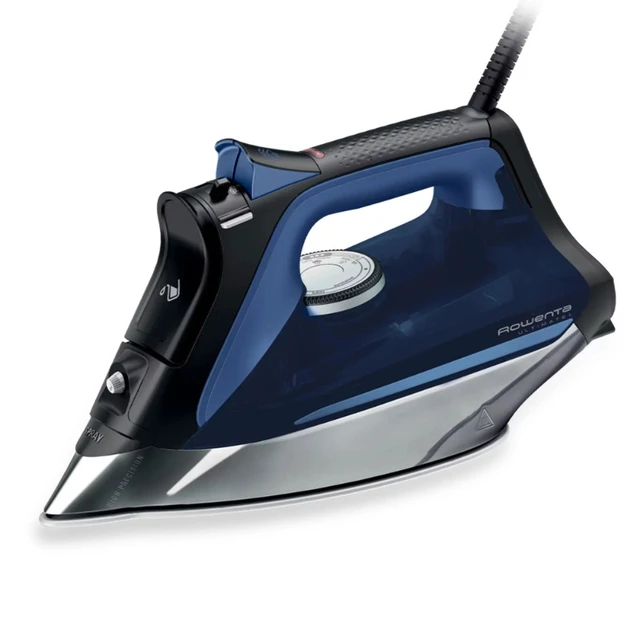Introduction
Ironing different types of fabrics requires specific techniques to achieve the best results without causing damage. Each fabric has its own characteristics and responds differently to heat and pressure. In this guide, we will explore effective ironing techniques for various types of fabrics, including delicate fabrics, synthetic materials, cotton, linen, wool, and knits. By understanding the specific requirements and employing the appropriate ironing methods, you can ensure that each fabric is ironed effectively and keeps its desired appearance.

How do I iron different types of fabrics effectively?
Delicate Fabrics
1.1. Silk
Set the iron to the lowest temperature setting or use a silk or delicate fabric setting if available.
Place a clean pressing cloth or a thin towel over the silk fabric to protect it from direct heat.
Gently glide the iron over the fabric without pressing too firmly. Avoid leaving the iron in one spot for too long to prevent scorching or shine marks.
Consider ironing silk garments while they are slightly damp to reduce the risk of damage.
1.2. Lace
Use the lowest temperature setting on the iron.
Place a pressing cloth over the lace fabric to protect delicate lace patterns or embellishments.
Glide the iron gently over the fabric without applying too much pressure.
If necessary, use a handheld steamer to remove wrinkles from lace fabrics without direct contact from the iron.
1.3. Chiffon
Use the lowest temperature setting or a cool iron for chiffon fabrics.
Place a pressing cloth or a thin towel over the chiffon fabric to protect it from direct heat.
Glide the iron lightly over the fabric, allowing the heat and steam to relax the wrinkles without pressing too firmly.
Consider using a handheld steamer for delicate chiffon garments to achieve better results.
Synthetic Materials
2.1. Polyester
Set the iron to a low or medium heat setting.
Use steam generously to relax the fabric and remove wrinkles effectively.
Glide the iron smoothly over the fabric without pressing too hard to avoid flattening or melting the fibers.
If needed, use a pressing cloth to protect the fabric from direct heat.
2.2. Nylon
Set the iron to a low heat setting or use a nylon or synthetic fabric setting.
Glide the iron gently over the fabric, avoiding excessive pressure or prolonged contact.
Use steam cautiously, as nylon can be more sensitive to heat.
Consider using a pressing cloth for added protection and to prevent the fabric from developing a shine.
2.3. Rayon
Set the iron to a low or medium heat setting.
Place a pressing cloth over the rayon fabric to protect it from direct heat.
Glide the iron smoothly over the fabric, using steam as needed to relax the wrinkles.
Avoid pressing too firmly, as rayon can be prone to flattening or losing its shape.
Cotton and Linen Fabrics
3.1. Cotton
Set the iron to a high heat setting, suitable for cotton.
Use steam generously to remove wrinkles effectively.
Place the garment flat on the ironing board and press the iron firmly over the fabric.
For better results, iron cotton fabrics while they are still slightly damp.
3.2. Linen
Set the iron to a high heat setting, suitable for linen.
Use steam generously to help relax the fabric and remove wrinkles.
Place a pressing cloth over the linen fabric to protect it from direct heat.
Glide the iron firmly over the fabric, paying particular attention to stubborn wrinkles.
Wool and Knits
4.1. Wool
Use a low heat setting or the wool setting on the iron.
Place a pressing cloth between the iron and the wool fabric to protect it from direct heat.
Gently press the iron onto the fabric without applying too much pressure.
Avoid using steam, as wool can absorb moisture easily.
4.2. Knits
Use a low or medium heat setting, depending on the knit fabric’s thickness.
Place a pressing cloth over the knitted fabric to protect it from direct heat and prevent stretching.
Press the iron lightly onto the fabric without stretching or distorting the shape.
Consider using a handheld steamer for delicate knitted garments to remove wrinkles without direct contact from the iron.
General Tips for Ironing Different Fabrics
5.1. Testing
Before ironing a specific fabric, it is advisable to test a small, inconspicuous area first to ensure that the heat and pressure do not cause any damage or undesirable effects.
5.2. Ironing Inside Out
For printed or decorated fabrics, iron them inside out to protect the design or print from direct heat. This reduces the risk of color fading or transfer.
5.3. Steam and Spritzing
Using steam or lightly spritzing the fabric with water can help relax the fibers and make ironing more effective, particularly for stubborn wrinkles. However, avoid excessive moisture that can cause water spots or damage the fabric.
5.4. Using a Pressing Cloth
When ironing delicate or sensitive fabrics, use a clean pressing cloth, thin towel, or a cotton cloth between the iron and the fabric. This helps protect the fabric from direct heat and prevents shine or burn marks.
Conclusion
Ironing different types of fabrics effectively requires specific techniques and considerations. By following the tips outlined for delicate fabrics, synthetic materials, cotton, linen, wool, and knits, you can achieve wrinkle-free results without causing damage. Remember to adjust the iron’s heat setting according to the fabric type, use steam or spritzing when necessary, and protect delicate fabrics with a pressing cloth. With these techniques and practices in place, you can confidently iron various types of fabrics and maintain their desired appearance.
